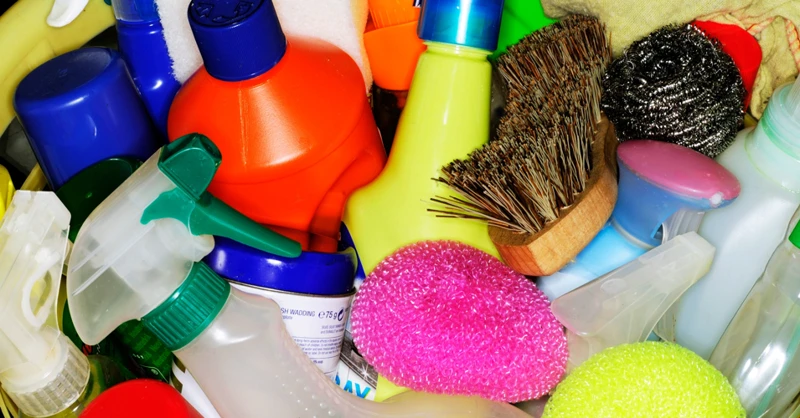Embarking on a painting project brings with it the promise of transformation and rejuvenation. However, before the first stroke of the brush graces a wall or a piece of furniture, the critical step of surface preparation must be undertaken. Properly preparing the surface ensures that the final result is not only aesthetically pleasing but also enduring. In this regard, cleaning the surface before painting is a task that should never be overlooked.
Cleaning Surface Before Painting: Why It’s Essential
Understanding Paint Adhesion
At the heart of a successful paint job lies the concept of adhesion. Paint must cling to surfaces with a tenacity that can only be achieved when the surface is free of contaminants. Dust, grease, and existing coatings can all undermine the paint’s ability to adhere, resulting in peeling or chipping over time. Hence, a clean surface before painting is not just recommended; it’s imperative for paint adhesion.
Longevity of Your Paint Job
The durability of a paint job is directly correlated to the initial cleaning process. A meticulously cleaned surface will support a paint film that withstands the test of time and the elements. Ignoring this step can lead to premature aging of the paint, necessitating frequent touch-ups or complete redo’s far sooner than would otherwise be required.
The Right Approach to Clean Surface Before Painting
Selecting the Appropriate Cleaning Agents
Choosing the correct cleaning agents is as critical as the cleaning process itself. Various surfaces and types of grime require specific solutions to ensure that they are thoroughly prepared without causing damage. From mild detergents for light soiling to more robust degreasers for stubborn grime, selecting the appropriate cleaning agents will set the stage for a flawless finish.
What to Use to Clean Surface Before Painting
Determining what to use to clean surface before painting largely depends on the nature of the surface and the extent of the dirt present. A combination of household cleaners, like soapy water or vinegar solutions, can be effective for general cleaning, while specialized products might be needed for more challenging tasks.
Step-by-Step Guide to Preparing Your Surface
Identifying the Type of Dirt and Stains
First and foremost, identify the type of dirt and stains present on the surface. This could range from simple dust accumulation to more stubborn residues like oil or mildew. Recognizing these will inform the cleaning technique and products required.
Choosing the Right Tools for Cleaning
Equally important is selecting the right tools for the job. Soft sponges or cloths may suffice for delicate surfaces, whereas stiff-bristled brushes might be necessary for tougher cleaning tasks. Ensure that the tools you choose are appropriate to avoid damaging the surface.
Avoiding Common Cleaning Mistakes
- Do not use overly abrasive tools that can scratch or gouge surfaces.
- Avoid excessive water, which can seep into substrates and cause damage.
- Steer clear of mismatched cleaning agents that could react negatively with the surface material.
Best Practices for Surface Cleaning
Assessing the Weather Conditions for Painting
Painting is not just about the surface; environmental factors play a significant role too. Ideal weather conditions will ensure that the surface is dry and will remain so throughout the painting process. Humidity and temperature extremes can affect drying times and the quality of the finish.
Handling Different Surface Materials
Different materials require tailored cleaning techniques. Wood, metal, and plaster each have their own susceptibilities and strengths, and acknowledging these will prevent damage during cleaning. Whether it’s gentler solutions for wood or rust removers for metal, understanding the material is key.
Professional Tips and Tricks
When to Consult a Professional Painter
While many painting projects are within the reach of dedicated DIY enthusiasts, there are times when consulting a professional painter is advisable. Complex surfaces, extensive damage, or the presence of hazardous materials like lead paint are all scenarios where professional expertise can be invaluable.
Preparing for a painting project involves more than just picking out the right colors; it’s also about ensuring a clean and receptive surface for your paint to adhere to. For detailed guidance on this essential first step, check out our comprehensive guide on surface cleaning before painting. Once you have a pristine canvas, you might be interested in exploring different painting techniques. Our tutorial on dry brushing painting can help you add depth and texture to your work. And of course, no painting job is complete without proper cleanup. To keep your tools in top shape for your next project, don’t miss our tips on cleaning painting tools.
Conclusion: Ready for a Flawless Paint Job
With the surface now impeccably cleaned and prepped, you’re poised to embark on a painting venture that promises excellent results. Remember, thorough preparation is the bedrock of any successful paint job. By following the outlined steps and advice, you’re not just painting; you’re enhancing the longevity and beauty of your space.

